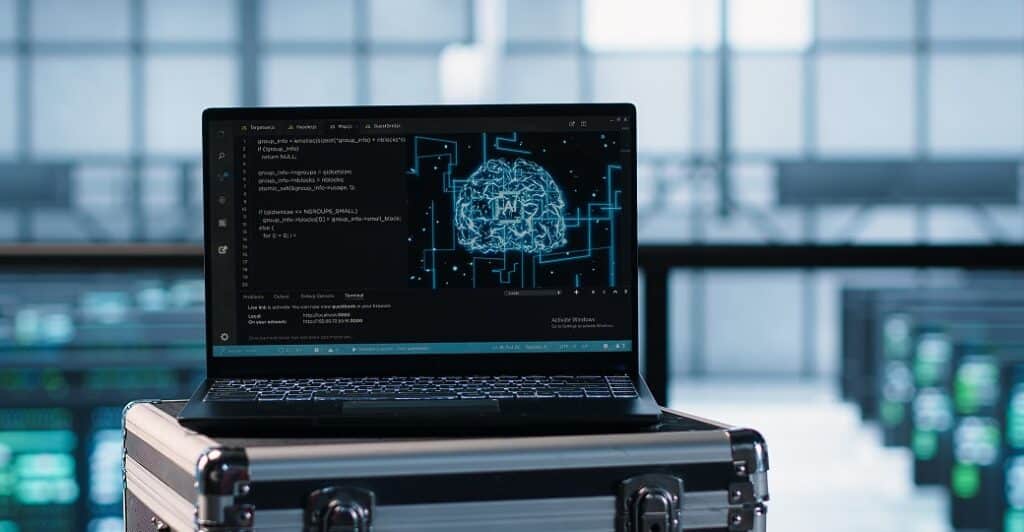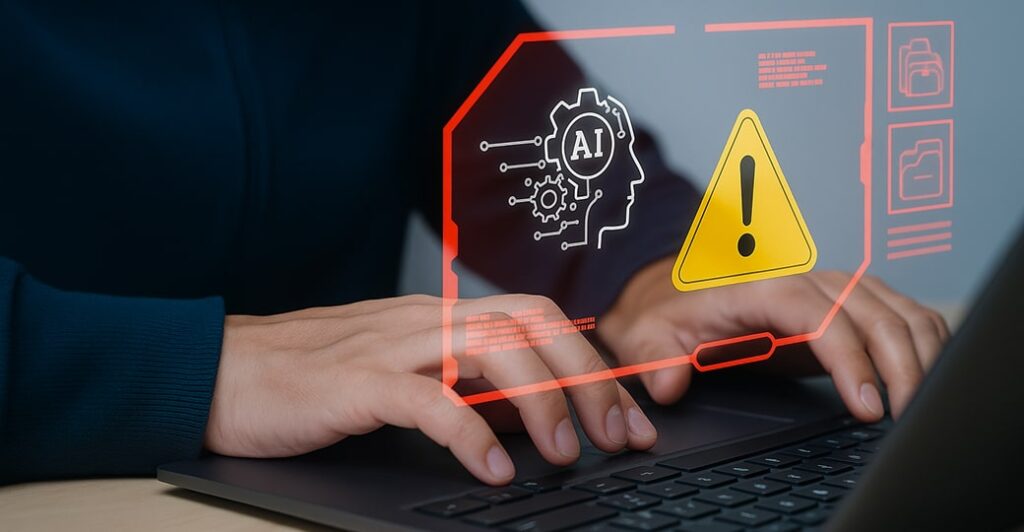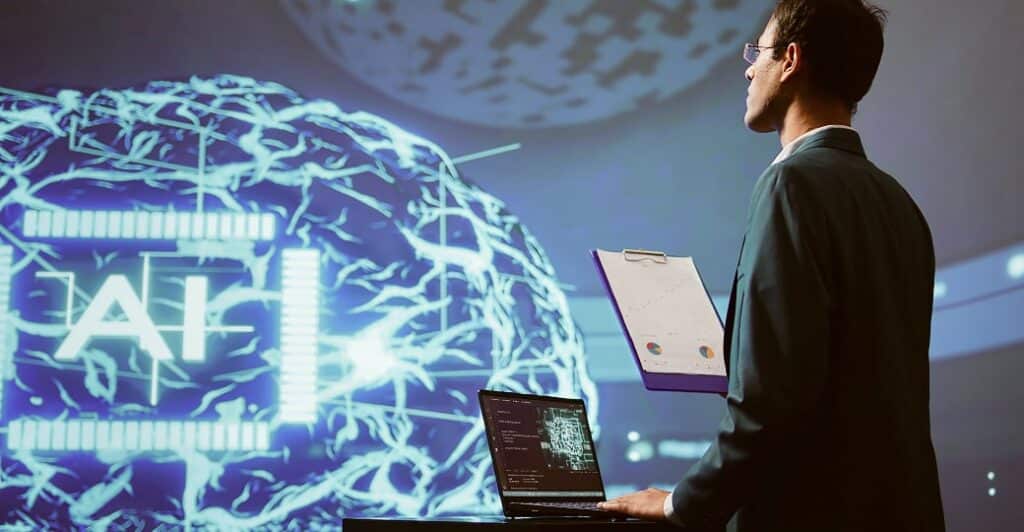How artificial intelligence is enhancing the capabilities of cybersecurity professionals
Artificial intelligence (AI) is actively embracing the penetration testing field due to its ability to process massive amounts of data, identify patterns, and automate complex tasks. In the cybersecurity industry, the number and complexity of threats are constantly increasing. AI can improve the efficiency of specialists by automating routine operations and helping to identify vulnerabilities that may be missed during manual testing.
It is important to emphasize that at the current stage of development, AI complements rather than replaces human expertise. AI technologies help to overcome the limitations of human resources, but critical thinking, expert judgment and final decision-making remain with humans. We share the apt viral idea: “AI won’t take your job. It will be taken by the people who are successfully using AI.” This is quite true for cybersecurity as well.
Let’s take a closer look at what AI pentest tools are, the goals and objectives of these tools, their capabilities, benefits, limitations, risks, and recommended use cases.
What are AI-based pentest tools?

AI-based pentest tools are software solutions that use machine learning, neural networks and other artificial intelligence techniques to automate and optimize penetration testing processes. This includes assessing the security of the AI systems themselves.
At the current stage of development, these tools are typically either hybrids of traditional tools with AI functions or platforms that use machine learning to improve the efficiency of individual pentest steps.
The key goals of pentest AI applications are as follows:
- Accelerating scanning and analysis processes.
- Improved accuracy of vulnerability detection.
- Reducing labor costs for routine operations.
- Predicting potential attack vectors based on collected data.
- Processing large volumes of information that are difficult to analyze manually.
- Structuring and automating reporting processes.
Let’s continue from the general to the specific and look at more concrete examples.
Tasks solved by AI tools for pentests

First and foremost, AI systems automate the collection and analysis of information about the target infrastructure. They can process large amounts of publicly available data, identify potential entry points, analyze the network structure and identify connections between different components. Machine learning algorithms help classify the information obtained and highlight the most relevant details for further investigation.
AI-based tools can also analyze code, configurations and network traffic to identify potential vulnerabilities. Unlike traditional scanners that use predefined signatures, AI systems can detect new or modified vulnerabilities based on behavioral analysis and context. They are also able to rank vulnerabilities by criticality based on the specifics of a particular infrastructure.
One of the most valuable applications of AI in pentests is vulnerability exploitation. Advanced AI tools can adapt existing exploits or create new ones for the specific conditions of the target system. This allows you to verify the actual exploitability of the vulnerabilities found and reduce the number of false positives. AI systems are environment-aware and can suggest the most effective methods to validate vulnerabilities.
Finally, AI automates the creation of structured test reports. The systems analyze the collected data, classify the vulnerabilities found, assess potential risks, and generate recommendations for remediation. This significantly reduces documentation time and improves its quality.
Examples of AI tools for pentests

It is important to note that the market for AI tools for pentests in 2025 is actively emerging and is far from stabilizing. There are still a few direct and widely recognized AI assistants created exclusively for pentests. Let’s consider the following tools:
- Burp Suite with AI-based plugins — a classic web pentester tool with enhanced capabilities through plugins that use machine learning to analyze web applications, automatically classify server responses and identify potential attack vectors.
- PentestGPT is a tool based on language models (such as GPT-4) that works in dialog mode and structures the testing process. It is particularly effective for automating routine exploration tasks, analyzing results, and training novices.
- Metasploit with AI integrations — a classic framework with modules that use AI elements to automate exploit selection based on analysis of target configurations and network traffic.
- OpenVAS with AI analytics — a vulnerability scanner that uses machine learning algorithms to prioritize the issues found in the context of a specific infrastructure.
- Cobalt Strike with custom AI scripts – Red Team operations platform with the ability to add AI-enabled scripts to analyze system behavior in real time.
- CloudSek XVigil — a platform that applies machine learning to analyze threats, identify vulnerabilities and predict possible attack vectors based on open source, Deep Web and Dark Web data.
- AutoReconAI — a multi-threaded tool for automated enumeration of services.
- HackAPrompt — a specialized tool that uses prompt engineering capabilities to perform security tests.
- DeepExploit — a system that applies deep learning techniques to automatically find and exploit vulnerabilities.
- Scau.pro — an AI tool that provides analysts with structured assistance in analyzing smart contract vulnerabilities.
- H-X Cybersecurity Agent — a specialized AI assistant for offensive security built on GPT with custom instructions.
Advantages of AI tools for pentests

First, AI tools significantly reduce pentest time by parallelizing data processing and automating routine operations. Tasks that require hours or days of human effort can be completed in minutes.
On the one hand, automating short repetitive tasks allows specialists to focus on the more complex aspects of testing that require human thinking and expertise.
On the other hand, AI takes over long monotonous tasks — from network scanning to report generation. This minimizes the risk of human error due to fatigue or inattention.
Finally, the use of AI assistants makes some aspects of pentesting accessible to professionals with less experience. This partially addresses the staffing shortage in the industry.
Limitations and risks of AI tools for pentests

First of all, pentests often require a deep understanding of business logic and infrastructure. Current AI models achieve this understanding with difficulty. They are effective in pattern-based tasks, but often get lost in non-standard scenarios and lose context in long sessions, especially in deep tests. For example, in privilege escalation and lateral movement.
Just like human pentesters, AI systems are not immune to false positives and false negatives. Algorithms can miss verification or exploitation, misinterpret data, or miss atypical vulnerabilities. This is critical in real-world pentest environments.
Even the most advanced AI tools require supervision of a specialist. The user must run commands, analyze complex situations, and adjust recommendations. This is especially important when testing critical infrastructure, where the cost of error is particularly high.
AI is effective when there are large data sets to train on, but in pentest, we often have to work with unique systems where no such data exists. This limits the ability of models to adapt to new scenarios.
Finally, the use of AI in pentesting comes with risks, as automated attacks with little human control can inadvertently harm systems and processes. This raises questions of liability, the legality of using automated attack tools, and regulatory compliance across jurisdictions.
Current trends and forecasts

Instead of implementing pure AI assistants for pentests, we are seeing more of a trend towards integrating machine learning into existing popular tools (Burp Suite, Metasploit, OpenVAS). This allows us to combine proven techniques with new data analysis capabilities.
AI pentest tools are being integrated with SOC platforms and cloud security systems to create unified defense ecosystems. This is especially relevant for big data and rapid response.
Some startups and researchers are working on tools where AI tries to mimic the actions of a pentester. Projects like AttackIQ use machine learning to simulate attacks. However, such solutions are still in their early stages and are more suitable for large organizations than for small ones.
For the sake of objectivity, it is worth mentioning that the development of AI not only opens up new opportunities for automating complex testing scenarios and helps security professionals, but also creates risks of the same technologies being used by attackers. This brings the “arms race” between defense and attack tools to qualitatively new levels.
Finally, incorporating AI tools into penetration testing processes requires special attention to legal and compliance issues. Automating AI attacks requires additional controls to ensure that they do not go beyond agreed-upon scenarios and cause unintended damage to infrastructure.
In terms of international standards, AI systems are subject to requirements for algorithm transparency, explanatory decision-making, logging of events, and manual control mechanisms. These provisions are enshrined, among others, in the European AI Act and a number of national regulations.
Comparative table of AI tools for pentests
Let’s perform a comparative analysis of AI tools for pentests. For this purpose, we will categorize the solutions listed by type and key capabilities, and describe the recommended usage scenarios and limitations of these solutions.
| Tool | Solution type | Key capabilities | Recommended usage scenarios | Limitations |
| Cobalt Strike with AI scripts | A platform with customization | Analyze system behavior; Track defense mechanism responses; Adapt attacks in real time | Red Team; Advanced modeling; Bypassing defenses | High cost; Requires programming skills; Risk of harming systems |
| CloudSek XVigil | Risk Management Platform | External perimeter analysis; DarkNet and open source data; Attack vector prediction | OSINT; External threat monitoring; Assessing an organization’s digital footprint; Reputation monitoring | Limited to external perimeter; Not a substitute for active testing; Emphasis on data, not exploitation |
| Burp Suite with AI plug-ins | Hybrid solution | Web application analysis; Server response classification; Anomaly detection; AI assistant for query generation | Deep web application testing; Detect SQL injection, XSS and other OWASP Top 10; Projects with thousands of queries | Requires deep technical knowledge; AI features are limited to web context |
| PentestGPT | LLM-based AI assistant | Interactive dialog approach; Tool recommendations; Analyzing results; Structuring the process | Training of novice pentesters; CTF and training platforms; Automation of routine exploration steps; Small and medium-sized projects | Human dependency; Loss of context in long sessions; Limited autonomy |
| Metasploit with AI integrations | Hybrid solution | Exploit selection automation; Analyze target configurations; Assess the likelihood of a successful attack | Post-exploitation activities; Network device testing; Vulnerability exploitability assessment | Limited AI capabilities; Requires technical skills; Dependent on exploit database |
| OpenVAS with AI analytics | Scanner with AI elements | Vulnerability prioritization; Contextual infrastructure analysis; Environment-specific criticality assessment | Initial perimeter scanning; External asset monitoring; Compliance checks | High false positives; Shallow analysis; Limited to typical vulnerabilities |
| AutoReconAI | Automated intelligence tool | Comprehensive information gathering; Automated OSINT; Identifying potential attack vectors; Structuring collected data | Initial pentest phases; Reconnaissance of an organization’s digital footprint; Automate routine reconnaissance; Identify hidden links between assets | Superficial analysis of specific technologies; Requires human verification of results; Limited effectiveness on secure systems |
| HackAPrompt | Interactive AI exploit generator | Create targeted exploits based on description; Analyze code for vulnerabilities; Generate security bypasses; Document found vulnerabilities | Develop PoCs for vulnerabilities; Train security experts; Test vulnerability hypotheses; Generate custom payloads | Ethical limitations; Does not always generate working code; Knowledge of only known vulnerability patterns; Not a substitute for a deep understanding of exploitation |
| DeepExploit | A platform with machine learning elements | Automated penetration testing; Self-learning exploitation algorithms; Integration with monitoring systems; Adaptive defense bypass techniques | Large-scale network infrastructures; Automated pentest; Repeated security testing; Resistance testing against standard attacks | Highly resource-intensive; Limited flexibility in non-standard environments; Need for model training; Difficult to customize for specific environments |
| Scau.pro | Smart contract code security analysis platform | AI analysis of codebase; Identify hidden vulnerabilities; Recommendations for fixes | Free frequent code security analysis; Code base risk assessment | Specialization in code analysis; Limitations with complex architectures; Requires integration into workflows |
| H-X Cybersecurity Agent | GPT-based specialized AI assistant | Advice on attack tactics; Generate test scenarios; Develop operational strategies; Real-time interactive assistance | Free security operations support; Specialist training; Development of testing methodologies; Red Team planning | Limited autonomy; Dependent on the quality of requests; No direct access to systems |
Conclusion

Artificial Intelligence is gradually becoming an important part of modern pentesting. The main value of AI assistants lies in automating routine tasks, analyzing large amounts of data, and identifying potential vulnerabilities that may be missed in manual or automated testing without AI.
To maximize efficiency in 2025, it is optimal to combine AI tools with traditional approaches:
- Use platforms with AI elements for reconnaissance and analysis of the outer perimeter.
- Use OpenVAS for initial scanning and vulnerability analysis.
- Use Burp Suite and Metasploit with AI plugins to automate routine scans.
- Experiment with custom scripts if you have the right technical skills.
We think that no AI assistant will replace the critical thinking and experience of a highly skilled pentester in the coming months. AI is a powerful assistant that saves time on routine tasks, but key decisions and creative approaches are still left to humans.
Leave a request on our website and get a free professional consultation on implementing AI in your security processes, security assessment of your AI systems or other cybersecurity issues.
_________________________
Subscribe to us at x.com so you don’t miss our news and blog articles.
